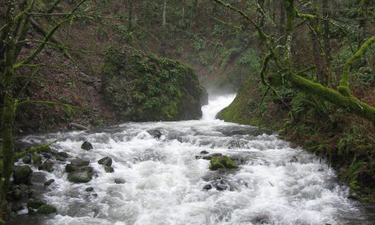 It is a self-evident truth that Americans love their parks. We build them in all shapes and sizes — for conservation, for recreation and for contemplation. We prize them highly and defend them fiercely, and our parks are the envy of the world.
It is a self-evident truth that Americans love their parks. We build them in all shapes and sizes — for conservation, for recreation and for contemplation. We prize them highly and defend them fiercely, and our parks are the envy of the world.
I have often wondered what it is about parks that give them such a special place in our consciousness. Why do we love them so, and why do we identify some of the most important times of our lives with them? Clearly, this feeling is found not just in America, where we have an abundance of public parks for many purposes, but increasingly around the world where people of many cultures are finding, to their surprise, that their parks and public squares are bedrock elements of human freedoms.
Within our parks, there is one natural resource that we may take for granted perhaps more than any other. This critical component enables and enriches almost all types of recreation, and it is the fundamental resource, more than any other, that gives life and sustenance to living lands — to wildlife, to plants and to all of nature. Simply stated, it is clean water.
Clean water is the life’s blood of parks. It makes them attractive, appealing to wildlife, vibrant and emotionally satisfying to people. And parks protect water quality, perhaps more than any other type of land use. The benefits of a clean, healthful environment that comes from clean water protect and enhance our individual health and that of our communities. Clean water consistently ranks as the top conservation priority of voters in survey after survey, and it is no wonder why.
In recent years, we have seen a generation of kids lose touch with nature and the outdoors. There are many reasons why, but we now know it is very difficult to encourage kids to find the joy in playing outdoors when they are spending an average of eight hours per day behind some type of electronic screen — television, smartphone, tablet, you name it. However, there is one surefire way to show kids how much fun it is to connect to nature and the outdoors, and that is to just lead ‘em to water. Water can enable that sense of discovery and learning through play that nature provides to kids. It is inherently interesting and fun. If you don’t think so, think back on your earliest, fondest memories — the lifetime moments you cherish. You will be surprised to note how many of them were on or around or in the water — fishing, swimming, playing at the beach, mucking about in a swamp — most of them involved water. We connect with nature and we build generational bonds through our connection to water.
We have a shared responsibility to protect our clean water and clean air for future generations. More to the point, it is a legacy we want to leave to our children — the ability to play freely and safely in clean water, to visit parks that have an abundance of clean water, and for them to be able to recreate in them and enjoy them throughout their lives so that they can share them with their own children. Moreover, we have a responsibility to foster the next generation of stewards for our parks and natural places. If we don’t, who will care for these places and water resources in the future?
Wallace Stegner was correct when he said that parks are one of our best ideas America ever had for fulfilling this purpose. The importance of parks in protecting clean water, enhancing it and making it available for all types of recreation is a sacred public trust that gives us high purpose and a profound sense of mission. Best of all, we love to do it and we are constantly refreshed by the thought that because of our stewardship, we give life to water, as water gives life to parks.
Richard J. Dolesh is NRPA’s Vice President of Conservation and Parks.
Water Is Life to Parks
July 1, 2013, Feature, by Richard J. Dolesh

